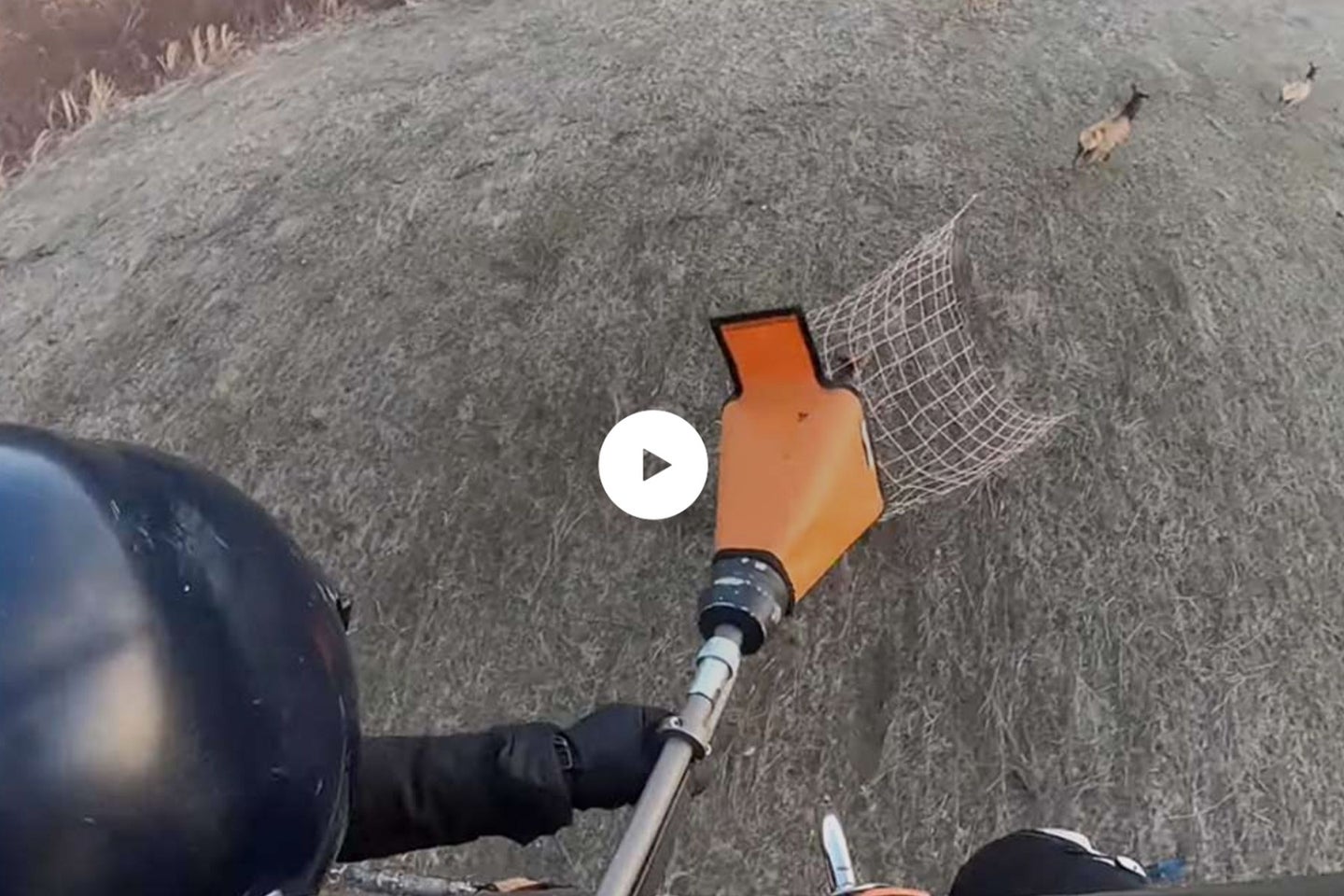Watch: Biologists in Helicopters Capture Elk with Net Guns

The research project will allow Tennessee wildlife officials to track pregnant cow elk and collar their newborn calves once they hit the ground. TWRA.
Tennessee wildlife researchers are throwing a wide net, but not for fish. They’re catching elk. In a recent video produced by the Tennessee Wildlife Resource Agency (TWRA), net gunners riding shotgun in helicopters discharge mesh traps from the air as they approach elk on the run. The netting tangles the elks’ legs long enough for biologists to restrain them for transport. The blind folded animals are then hoisted up for a chopper ride to a staging area where they’re examined.
“Other samples are being taken, disease testing, parasite testing,” said Dr. Lisa Muller, University of Tennessee wildlife professor in the TWRA video documenting the process, “we’re really doing a full work up on all of the elk that we’re capturing.”
A transmitter goes with the pregnant cows when they’re released back into the wild so their calves can be found quickly once they’re born. The goal of the operation is to find the calves in their first few days of life and secure a collar around their neck for tracking purposes.
Scientists will then track the calf’s movements as it matures, along with the cause of death if any of the animals are killed while wearing a collar. The signal transmitted by a trackable collar changes when the animal wearing it doesn’t move for a long period of time. That means one of two things: The collar fell off and is laying in the woods needing retrieval or the animal is dead.
“The purpose of the project is to get a better understanding of calf survival and recruitment,” says Garrett Clevinger, TWRA elk program coordinator in an agency video. “This is pretty important. This is not something we’ve done yet so it will be very beneficial for us to be able to get that information so that we can better understand population dynamics of this species.”
Read Next: Did a Kansas Angler Stuffed His “State Record” Crappie with Steel Ball Bearings?
The collared calves will be part of a collaborative study in partnership with the state agency and researchers from University of Tennessee, with support from Rocky Mountain Elk Foundation. The non-profit wildlife conservation organization helped return elk to the Volunteer State in 2000. The state maintains an elk viewing tower for the reintroduced herd at North Cumberland Wildlife Management Area, which encompasses nearly 200,000 acres an hour from Knoxville. It is the largest WMA in the state.
The post Watch: Biologists in Helicopters Capture Elk with Net Guns appeared first on Field & Stream.
Articles may contain affiliate links which enable us to share in the revenue of any purchases made.
